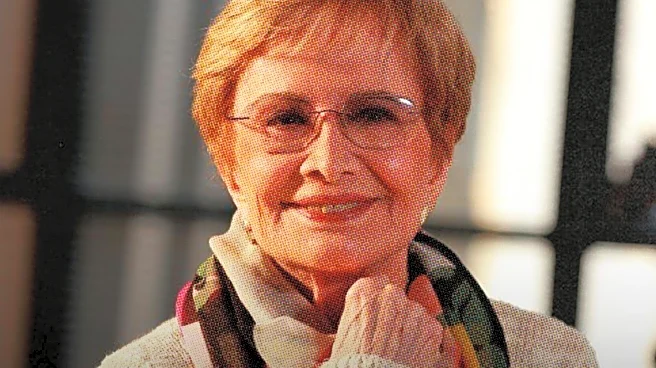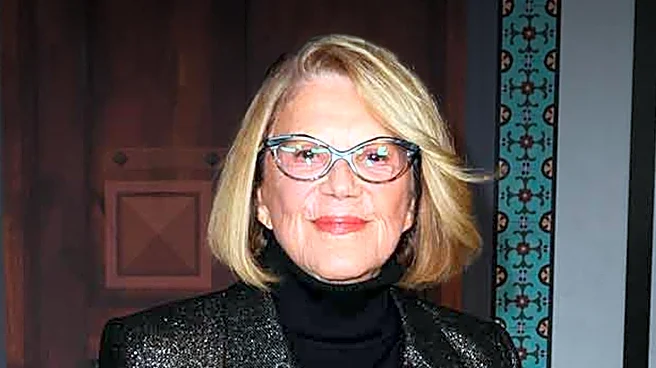What's Happening?
Agnes Gund, a renowned American arts philanthropist and collector, has passed away at the age of 87. Gund was a pivotal figure in the art world, known for her transformative contributions to cultural institutions and her advocacy for social change through art. Born in Cleveland, Ohio, in 1938, Gund was deeply influenced by her early exposure to art, which shaped her lifelong commitment to the arts and education. She served as the president of the Museum of Modern Art (MoMA) in New York from 1991 to 2002, where she championed the inclusion of works by women and artists of color. Gund was instrumental in MoMA's $858 million expansion and donated around 100 works to the museum. Beyond MoMA, she founded the Studio in a School program to provide art education to New York City public school children and established the Art for Justice Fund to address mass incarceration in the U.S.
Why It's Important?
Agnes Gund's contributions have had a lasting impact on the art world and beyond. Her efforts to diversify art collections and support underrepresented artists have helped reshape cultural institutions, making them more inclusive. Gund's philanthropic initiatives, such as the Studio in a School and the Art for Justice Fund, highlight her commitment to using art as a tool for social change. These programs have provided educational opportunities and supported criminal justice reform, affecting thousands of lives. Her legacy continues to inspire future generations of artists, educators, and philanthropists, emphasizing the power of art to drive societal progress.
What's Next?
While Agnes Gund's passing marks the end of an era, her initiatives and contributions will continue to influence the art world and social reform efforts. Institutions like MoMA and the Studio in a School will likely continue to honor her legacy by advancing her vision of inclusivity and accessibility in the arts. The Art for Justice Fund, although shuttered, has set a precedent for using art sales to fund social justice initiatives, potentially inspiring similar efforts in the future. Gund's extensive art collection, intended for public institutions, will continue to enrich cultural landscapes and inspire new dialogues around art and social issues.
Beyond the Headlines
Agnes Gund's life and work underscore the intersection of art and activism. Her decision to sell Roy Lichtenstein's 'Masterpiece' to fund the Art for Justice Fund exemplifies how art can be leveraged for philanthropic purposes. This approach challenges traditional views of art as a private asset, promoting the idea of art as a public good. Gund's legacy also raises important questions about the role of collectors and philanthropists in shaping cultural narratives and addressing societal challenges. Her story is a testament to the enduring impact of visionary leadership in the arts.












